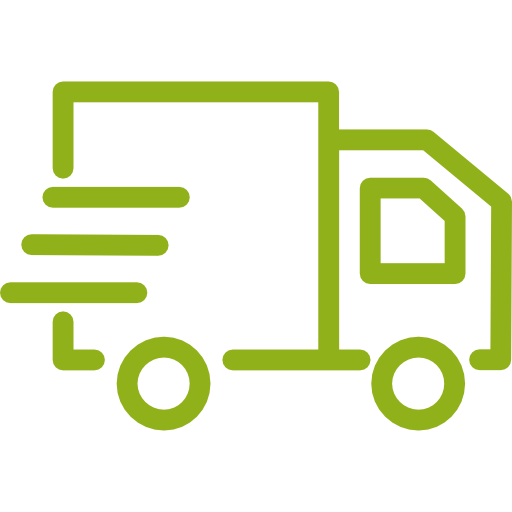This page provides an overview of the corporate social responsibility (CSR) risks related to soy grown in Brazil.
Brazil is the second largest producer of soybeans worldwide, accounting for 30% of the global production. In 2015, soy was grown on approximately 30 million hectares in the country, producing more than 84 million tonnes of soy bean. Over 80% of soy farming in Brazil is concentrated in three tropical biomes:
- Atlantic Forest. Farms tend to be smaller than elsewhere in Brazil and privately owned. The land tenure is less contentious than in the other two main soy producing tropical regions of Brazil.
- Cerrado. Farms tend to be medium or large with private ownership with a large proportion of farms having questionable legal land tenure.
- Amazon. Farms tend to be medium or large with private ownership with a large proportion of farms having questionable legal land tenure.
The Forest Code is the predominant national legal framework for land use in Brazil, and shapes many of the land use practices connected to soy production.
In response to pressure from retailers and non-governmental organisations, major soybean traders in Brazil signed the Soy Moratorium, agreeing not to purchase soy grown on lands deforested after 2008 in the Brazilian Amazon. The moratorium is widely credited as a major factor in reducing deforestation in the Brazilian Amazon in recent years.
Despite the Moratorium, a number of CSR risks are still present in Brazilian soy supply chains. The risks are wide ranging and appear across the business, social and environmental areas. If you are sourcing soy from Brazil you should take care to ensure the extensive risks identified are not present in your supply chains, or have been sufficiently mitigated.
Score: 35 / 100 in 2018
Rank: 105 out of 180 countries in 2018
There is a soy moratorium in effect in the Brazilian Amazon. Major soybean traders have pledged not to purchase soy grown on lands deforested after 2008 in the Amazon Biome.
There are currently no armed conflicts in Brazil according to the Council on Foreign Relations' Global Conflict Tracker.
According to the Uppsala Conflict Data Program there were 329 deaths from 2010-2017
The Round Table on Responsible Soy (RTRS) certification system is used. 715,000 hectares of soy plantation is certified (2015).
Information Gathering
Gather information on your supply chain
- Find out the different sources of soy
- Determine which source type your soy comes from
- Find out the main documents that can be used to indicate legality throughout the supply chain
Sources of soy
| Soy source type | Description of source type |
|---|---|
|
All regions: Large commercial farms |
Soy from large commercial farms greater than 2,500 hectares. Such farms are mainly privately owned, many with uncertain land tenure. |
|
All regions: Medium-sized farms |
Soy from medium-sized commercial farms of an average of 500 hectares. Such farms are mainly privately owned, many with uncertain land tenure. |
|
Atlantic Forest: Small cooperative farms |
Soy from small cooperative farms in the Atlantic biome. The farms are mostly privately owned, many with uncertain land tenure. A small portion of soy is also produced by smallholders in rural settlements who mainly sell their production through cooperatives. Land tenure is less contentious than in the other two main soy producing tropical regions of Brazil. |
Documents to indicate legality
|
|
Farm level
|
|
|
Processing, trade and transport
|
|
|
Export and customs
|
Risk Assessment
Assess the risks in your supply chain
- Find out the main environmental, social and legality risks
- Download the full risk assessment to see more detail
Main environmental, social and legality risks
|
|
Business issues
|
|
|
Conversion
|
 |
Social issues
|
 |
Environmental issues
|
|
|
GMO
|
Risk Mitigation
Mitigate the risks in your supply chain
Learn which actions we recommended to mitigate the risks associated with the soy sources from Brazil
Mitigation recommendations
We have two tools to help you mitigate risks for Brazilian soy supply chains:
-
The Supplier Evaluation Checklist for soy from Brazil will help you identify and specify the risks in your supply chain.
-
The Risk Mitigation Guide gives you a detailed overview of risks in Brazil, and how to mitigate them.
The tools above give you the most information. Below is a summary of our recommended actions to mitigate the risks associated with the three soy source types from Brazil.
1. Fully map your supply chain
- Our supply chain mapping tool can help you do this.
2. Obtain and verify documents
- Land tenure and business documents:
- CAR - A Rural Environment Registry receipt / record (Protocolo / recibo do Cadastro Ambiental Rural)
- CCIR - Certificate of Registration of Rural Real Estate (Certificado de Cadastro do Imóvel Rural)
- ITR - Proof of Registration of the Territorial Institute (Comprovante de Cadastro do Instituto Territorial)
- Certificate of Deed of Entire Content of the Rural Real Estate (Certidão de Matrícula de Inteiro Teor do Imóvel Rural)
- CNDIR - Negative Certificate for Debts of the Rural Real Estate (Certidão Negativa de Débitos do Imóvel Rural)http://www.receita.fazenda.gov.br/aplicacoes/atspo/certidao/certinter/niitr.asp; AND
- CNPJ Card Registration and Cadastral Situation of Legal Entity (Comprovante de Inscrição e de Situação Cadastral de Pessoa Jurídica)
- Registered or Notarized Lease, Partnership or Lending Agreement - Contrato de Arrendamento, Parceria ou Comodato Rural Registrado ou com firma reconhecida em cartório
- APF - Authorization for the Operation of Rural Activity (Autorização Provisória de Funcionamento de Atividade Rural)
- Records Free Prior Informed Consent and copies of negotiated agreements
- Map identifying the traditional communities close to the farms, in order to identify potential conflicts, especially for medium and large enterprises. Your supplier might be able to provide such a map. You can get a map of the location of indigenous lands here and one of the Quilombolas communities’ here. The Ministry of Environment’s website provides information on traditional communities
- Information on conflicts, which can be found:
- In research of documented conflicts by Brazilian states
- In a report (2015) of well-known conflicts
- Tax-related documents
- Confirm Individual or Corporate Taxpayers’ Registration Numbers (CPF (Cadastro de Pessoas Físicas) /CNPJ (Cadastro Nacional da Pessoa Jurídica))
- Certificate of Debt Relating to Federal Tax Credits and to Active Union Debt
- Fiscal bills of sale (Nota fiscal de venda do Produto) must include applicable sales taxes.
- Receipts for payment sales taxes shall exist.
- Sales prices shall be in line with market prices.
- Employment-related documents
- The Social Security Employee website confirms all employees are registered and all relevant insurances are in place
- CAGED Statement - General Register of Employees and Unemployed (Cadastro Geral de Empregados e Desempregados)
- Collective Agreement recorded by Ministry of Labour and Employment (MTE - Ministério do Trabalho e Emprego)
- CNDT- Certificate of Negative Labor Debits (Certidão Negativa de Débitos Trabalhistas)
- Certificate of Negative Labor Lawsuits
- CRF- FGTS Regularity Certificate (Certificado de Regularidade do FGTS - Fundo de Garantia por Tempo de Serviço)
- CNDT - Certificate of Negative Labour Debits with the Federal Revenue Service);
- CTPS - Work and Social Security Booklet (Trabalho e Previdência Social)
- Employment contracts
- Evidence of insurance (National Social Security Institute (INSS - Instituto Nacional do Seguro Social)
- Salary payment receipts
- Policies and procedures confirming ILO Fundamental Conventions are upheld
- Health and Safety (H&S) related documents
- H&S Manager employee contract
- SSO – Occupation Health and Safety Training Procedures (Segurança e Saúde Ocupacional)
- PGSSMATR - Rural Work Safety, Health and Environment Management Program (Programa de Gestão de Segurança, Saúde e Meio Ambiente de Trabalho Rural (NR – 31))
- PPRA - Program for the Prevention of Environmental Risks (Programa de Prevenção de Riscos Ambientais (NR – 9))
- PCMSO - Program for the Medical Control of Occupational Health (Programa de Controle Médico e Saúde Ocupacional (NR – 7))
- Minutes of the CIPA/CIPATR - Internal Commission for the Prevention of Accidents of Rural Work (Comissão Interna de Prevenção de Acidentes do Trabalho Rural)
- ASO - Occupational Health Certificate (Atestado de Saúde Ocupacional)
- Labor Ministry Inspection Book (Livro de Inspeção do Trabalho)
- Environmental documents
- TCA - Environmental Commitment Term (Termo de Compromisso Ambiental);
- PRAD (Restoration of degraded areas projects if required by the Brazilian Forest Code)
- The list of farms apprehended (black listed) by the federal government for illegally converting natural forests and ecosystems
- Grant of Right to Use Water Resources – if required (Outorga de Direito de Uso de Recursos Hídricos)
- Satellite time series images, to detect land change cover in the farm, to assess the risk of deforestation and PRAD (restored degraded areas) compliance. Some sources include:
- Global Forest Watch maps
- PRODES/INPE (high resolution)
- DETER/INPE (high resolution)
- Maps of protected areas confirm the farm is not in such an area
- Environmental License issued by IBAMA and endorsed by the legally competent agencies FUNAI - National Indigenous People Foundation (Fundação Nacional do Índio), FCP - Palmares Cultural Foundation (Fundação Cultural Palmares), IPHAN – Institute of National Historic and Artistic Heritage (Instituto do Patrimônio Histórico e Artístico Nacional) where cattle ranches are near/in Indian Reserves
- CAR - Rural Environment Registry receipt / record (Protocolo / recibo do Cadastro Ambiental Rural)
- PRAD (Restoration of degraded areas projects if required by the Brazilian Forest Code)
- Biodiversity surveys and High Conservation Value (HCV) assessments
- Conversation/High Conservation Value (HCV) management plans
- Historical remote sensing imagery evidence to confirm no conversion of primary forest, peatlands and HCVs post 2008 (aligned with the new Forest Code changes).
- Trade and transport documents
- Certificate of Debt Relating to Federal Tax Credits and to Active Union Debt
- Fiscal bill of sale (Nota fiscal de venda do Produto)
- CNPJ card (Cadastro Nacional da Pessoa Jurídica)
- Electronic Invoice (NF-e); Nota Fiscal Eletrônica (NF-e)
- Auxiliary Document of the Electronic Invoice (DANFE); Documento Auxiliar da Nota Fiscal Eletrônica (DANFE)
- CT-e (Knowledge of Electronic Transport); Conhecimento de Transporte Eletrônico (CT-e)
- MDF-e (Electronic Manifest of Fiscal Documents);
- Auxiliary Document of the Electronic Manifest of Fiscal Documents (DAMDFE); Documento Auxiliar do Manifesto Eletrônico de Documentos
- Pro-forma invoice
- Export Registry – RE - issued and completed in SISCOMEX
- Packing list
- Export Declaration (DE)
- Bill of Lading
- Certificate of origin
- Shipping certificate
- GMO related documents
- Laboratory GMO-free certificate
- Organic soy certificate
3. Consult stakeholders
- Staff at the Rural Environmental Registry System (SiCAR, Simistema Nacional de Cadastro Ambiental Rural, www.http://car.gov.br/publico/imoveis/index) verify the farm has a valid CAR status by checking its CAR registration number
- Neighbours, local communities, landowners and other stakeholders confirm that land tenure rights are clear and, where applicable, the lease of the land has been agreed by all the landowners
- Neighbours, local communities, landowners and other stakeholders confirm that thee are not any court orders or other legal decisions that mean that the company is not allowed to operate due to conflicts of land tenure
- Employees confirm that they are employed according to the regulations and required contracts
- Employees confirm that they:
- Are covered by mandatory insurance policies
- Hold certificates of competence required for the function that they perform
- Are paid a salary which is officially stated by the employer according to legal requirements
- Are above the minimum age for both soy farm activities and hazardous work
- Are paid at least the legally established minimum wage
- The Federal Reserve confirms that the operation is up-to-date in payment of applicable value-added taxes
- The NGO Reporter Brazil and/or the Transparency List on Slave Labor on the InPACTO website confirm that a supplier is not listed in the black list of slave labour
4. Carry out on-site verification
- Confirm soy plantation takes place within the authorised boundaries in accordance with the relevant licenses
- Confirm that the company has an occupational safety and health management system and programme, and that a H&S officer (required for large-scale plantations), training, procedures and equipment are in place
- Confirm all the Brazilian Forest Code requirements and environmental controls are implemented in the field
- Confirm management plans for protected sites, species and High Conservation Values are implemented and monitored
- Confirm that maps and remote sensing images for deforestation reflect reality
- Confirm that the company does not employ unregistered workers, either on probation, or who receive government benefits for the unemployed
- Confirm that there was active consultation and/or a Free Prior Informed Consent process conducted and that there is a dispute-resolution mechanism in place
- Confirm that the supplier has documentation or a copy of a management plan that ensures required legally protected areas and species are safeguarded in accordance with the law.
- ICMBIO - Fauna Species
- Brazilian Forest Service - SNIF - National System of Forest Information on threatened species
- List of Endangered Species: Flora and Terrestrial Fauna














